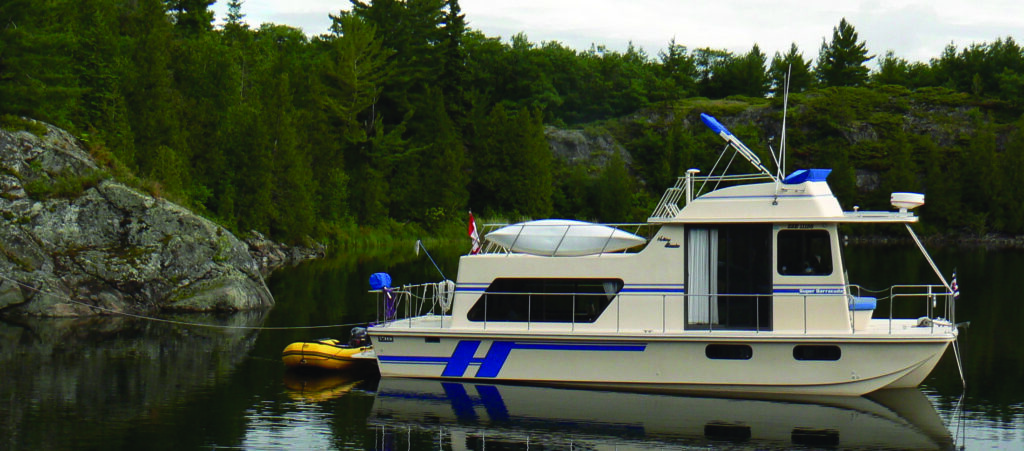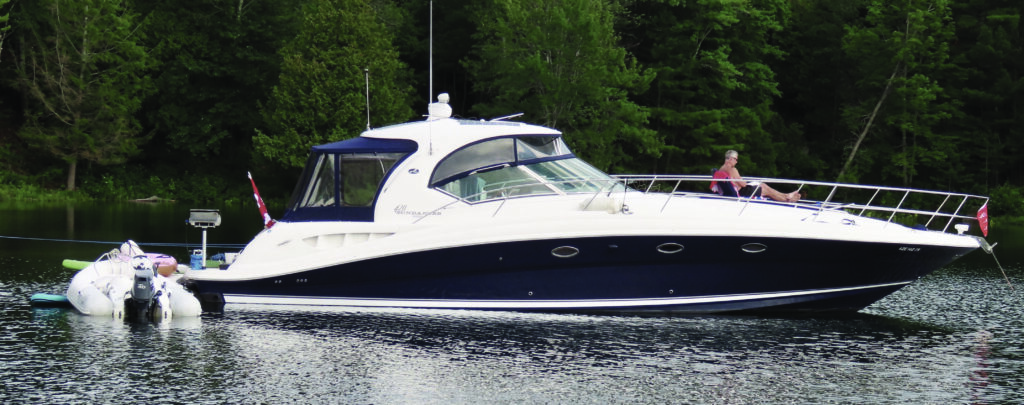Easing Anchoring Anxiety is Rooted in Respect for Both Your Anchorage and Your On-Water Neighbours
On February 23, Ontario’s Ministry of Natural Resources and Forestry posted a proposed amendment to Regulation 161/17 to the Public Lands Act. The amendment addressed perceived issues with the recent anchoring of private floating residential structures on public waterways.
Unfortunately, the amendment initially included cruising vessels with accommodations that would have severely limited Ontario boaters’ access to traditional anchoring spots. Fortunately, a strong response from recreational boaters and marine operators motivated the ministry to quickly amend their proposal and confirm that the amendment would not impact a boater’s ability to navigate, including reasonable mooring or anchoring.
Amongst the safety and environmental concerns that precipitated the amendment, noise pollution, aesthetic and privacy-related impacts to waterfront private property owners was addressed.
We all want to enjoy the beautiful vistas and safe harbours these anchorages provide. As someone who anchors frequently throughout the season, I am very sensitive to any potential imposition I pose to both waterfront property owners and the other boaters sharing the anchorage.
Our preferred destinations each summer while on Boldly Go are the many anchorages found throughout the North Channel and Georgian Bay. As much as we enjoy day visits to local communities, our goal is to be in a pristine anchorage that night.
Each anchorage has unique characteristics. With experience, as you enter the anchorage, you learn to read not only the physical layout but also the placement of existing boats at anchor and cottages to best select your spot for the night. I hope that my suggestions below assist you in securing an anchorage anxiety free.
Given the relative popularity of anchorages, be prepared to have at least one alternate anchorage in mind should your preferred spot not meet your criteria. For me, those criteria are as follows:
- Is the anchorage overcrowded or is there ample space for me to join the other boats?
- Does the bottom allow for my anchor to properly set?
- Is my location clear of other boats traversing the area or water-skiers/PWCs?
- Is my boat protected from larger waves or changes in wind speed/direction?
- Do I want the boat to swing on the bow anchor or use a shoreline (or second stern anchor) to limit swinging?
- Will I impede the safe movement of boats, whether cottage owners or fellow visitors?
- Is there a public place to take my dog ashore without trespassing?
- Can we swim safely while sharing the anchorage with boaters/landowners?
- If overnight, is my boat protected from changes in the weather?
- If overnight, can I expect a tranquil sleep or is there a party brewing nearby?
- Should the anchorage meet our criteria, we then follow a few golden rules.
Boats Already At Anchor Have Priority
Often there will be boats in the anchorage when you arrive. They set the precedent as to where and how you secure your boat.
In some anchorages, like Mary Ann Cove in the North Channel, you will often find boats anchored with a stern line ashore to limit swinging which allows for more boats in the popular anchorage without crowding.
As well, there may be boats in the middle swinging on their bow anchor. Sometimes the existing boats may have an overly generous amount of rode out limiting space for others. Even so, it is your responsibility to anchor clear of the other vessels.
Mark Your Anchor
While anchoring, place a floating anchor buoy so that others know where your anchor is and can maneuver around it, or make sure their anchor/rode/boat will not snag it.
Respect The Peace
We have all experienced how sound carries while on the water. We know that an anchorage may include barking dogs, music, generators and kids playing.
Rather than frustrating your neighbours, common sense should prevail in predicting at what level and when such sound intrusions occur, especially at night when most boaters are looking for a serene sleep.
Assess Potential Spots Prior To Anchoring
We always cruise dead slow through the anchorage to select the best spot that meets my criteria above. This may take some time as we discuss what works best for us but it results in a better experience. Most important of all, don’t anchor where your boat can pose a risk or imposition to those already at anchor.
Keep The Anchorage Pristine
Whether on land or in the water, we all have a responsibility to respect private property and clean up after ourselves, and our pets, when ashore.
Many public anchorages have campfire spots. Make sure your fire is properly extinguished, clean up after yourselves and bring your own firewood as deadfall should be left on the ground to support the local ecosystem.
When tying ashore, try to use existing cleats or rocks as anchors rather than trees. Your rope may abrade the bark, causing harm to the tree.
Be Prepared To Relocate
Many factors may cause you to reconsider the anchorage you are currently at. Weather conditions may change, other boaters may lessen your enjoyment, your anchor may not be holding properly and so on. In such cases, be prepared to move to another spot with the goal to have a peaceful night.
Communication Is Key
Entering an anchorage, selecting a spot and deploying your anchor typically requires a fair bit of communication between the helm and person handling the anchor.
Multiple anchoring attempts may often occur when the spot selected is not what you thought it was. Yelling at each other to overcome noise and frustration typically makes the anchoring process go badly while entertaining your neighbours. Discuss your plan prior to anchoring and develop hand signals or use two-way walkie-talkies to communicate while anchoring. Your stress level will be less, often with improved marital relations.
Be Seen
When anchored at night, always have your anchor light on. It allows boats moving through the anchorage after dark to see where others are moored. As well, while anchored, you will be able to see if other boats around you have shifted position.
As a courtesy to others, when approaching an anchorage at night, don’t shine a spotlight directly into another boat. That is not very neighbourly.
Help Where Help Is Welcome
Be prepared to assist other boaters if it looks like they could use help getting set up. Sometimes a friendly hand can greatly improve an anchoring experience. As well, you may develop a new friend. Some boaters may wave off assistance but there’s no harm in offering.
Should someone anchor in a way that puts your boat at risk, try to have a calm conversation with the skipper to limit any animosity. Most boaters, when approached respectfully, will appreciate your suggestions.
I hope these suggestions help you reduce your anchoring anxiety. I also hope to see you anchored near Boldly Go this coming season. If so, venture over and introduce yourself. Evening cocktails and a new friendship may very well ensue.
Want to enjoy more fun, relaxing, and carefree days on the water?
The more knowledge you have, the more enjoyable boating becomes! Register for a course: www.boatingcourses.ca
by Jeff Evans, CanBoat / Sarnia








